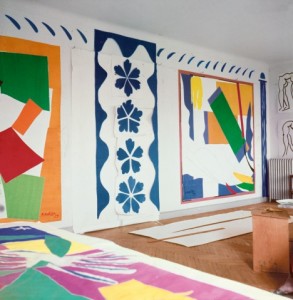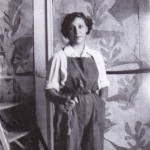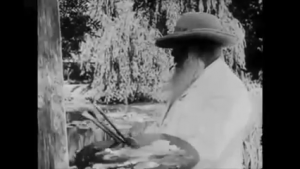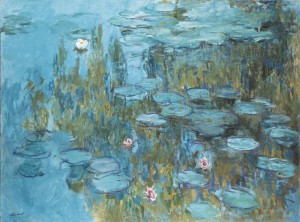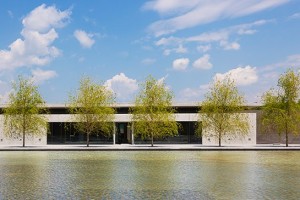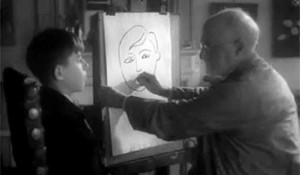 The following two short videos provide brief glimpses of Henri Matisse at work in his studio. In the first from 1946, he draws a portrait of his grandson, Gerard, with charcoal. In the second, he was filmed near the end of his life “drawing with scissors,” which is how he described his method of working with hand-colored papers.
The following two short videos provide brief glimpses of Henri Matisse at work in his studio. In the first from 1946, he draws a portrait of his grandson, Gerard, with charcoal. In the second, he was filmed near the end of his life “drawing with scissors,” which is how he described his method of working with hand-colored papers.
Besides the rare opportunity to see Matisse at work, we can also hear his voice in the first video. He is explaining how he thinks about drawing. His comments translated into English are:
“Me, I believe that painting and drawing are the same thing. Drawing is a painting done in a simpler, limited way. On a white surface, a sheet of paper, with a pen and some ink, one creates a certain contrast with volumes; one can change the quality of the paper given supple surfaces, light surfaces, hard surfaces without always adding shadow or light. For me, drawing is a painting with limited means.”
- Jaqueline Duhême standing in front of designs for the Tree of Life stained-glass window for the Chapel of the Rosary, Vence.
- Matisse at the Hôtel Régina, Nice, c. 1949 Photographer: Lydia Delectorskaya© Succession Henri Matisse
- Matisse working on a cut-out, c. 1949.
Jacqueline Duhême, one of Matisse’s studio assistants in the late 1940s, describes how he made his cut-outs here.

